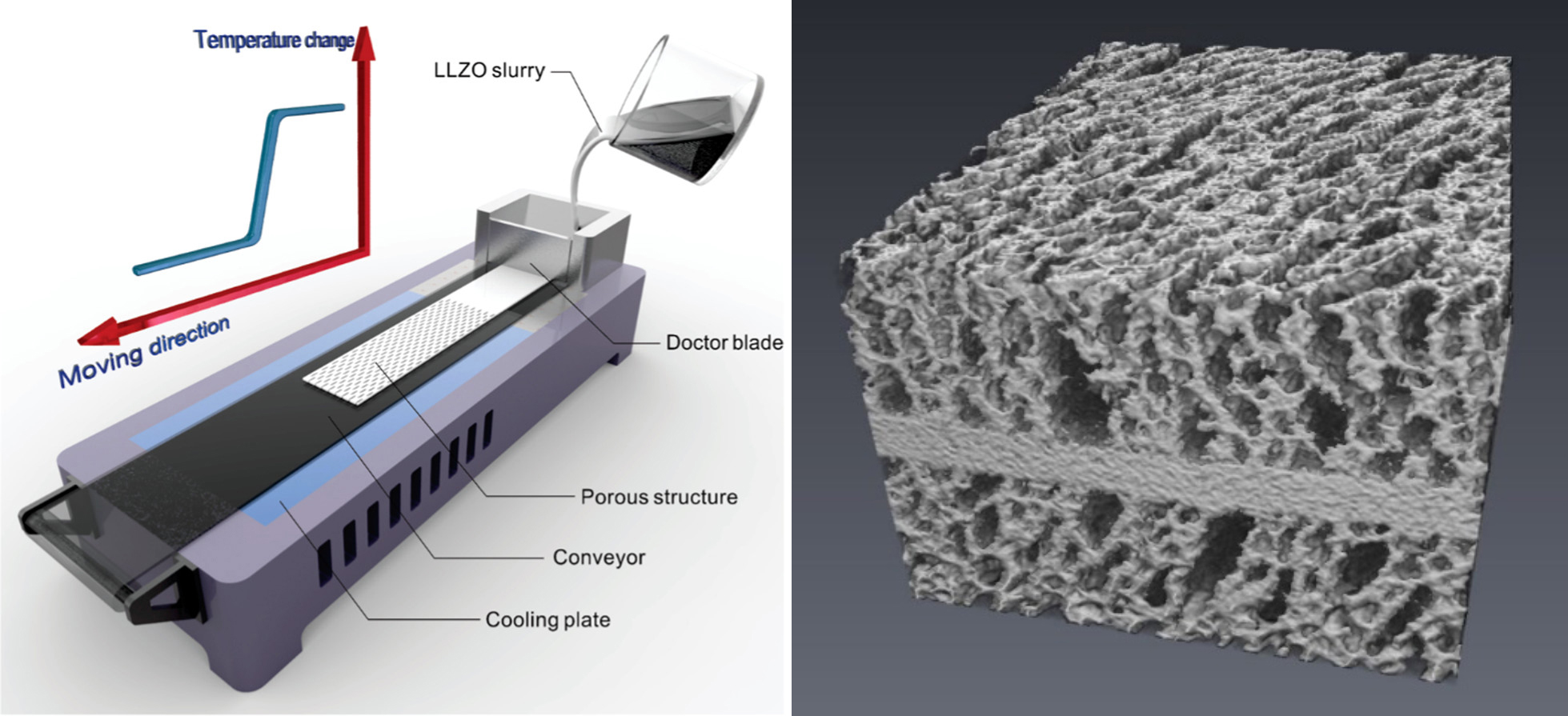All-solid-state batteries promise improved safety and higher energy densities versus conventional lithium-ion batteries. Obtainable energy densities can be further improved by using a thick composite cathode in which a porous solid electrolyte is filled with cathode materials. Al3+-doped Li7La3Zr2O12 (LLZO) is a prime candidate for the scaffolding material, as it exhibits the required performance metrics to serve as a solid electrolyte.
Researchers wanted to learn whether “freeze-tape-casting”—a scalable, environmentally friendly processing method—could produce suitable LLZO scaffolds with pores aligned along the direction of the film’s thickness. The directionality of the pores helps with infiltration of cathode material during assembly, and the directionality of the solid electrolyte improves lithium-ion transport during cycling.
At ALS Beamline 8.3.2, freeze-tape-cast LLZO samples were characterized using x-ray microtomography. This allowed the researchers to monitor the pores’ size variation and continuity, which are important because the pore size limits the usable active-material size (e.g. cathode powder) and continuity ensures that all pore spaces are accessible. Samples with unidirectional pores at porosities greater than 70% were produced, which is beneficial because the more the active material is incorporated, the greater the battery capacity. Overall, the researchers concluded that freeze-tape-casting indeed serves as a powerful tool for optimizing LLZO pore features.
The LLZO scaffolds were then used to construct a working battery with a practical form factor—the first for an all-solid-state battery based on an oxide electrolyte. A provisional patent application has been filed and, with further development, these types of solid-state batteries could have the potential to eventually supplant conventional lithium-ion battery technology.

H. Shen, E. Yi, S. Heywood, D.Y. Parkinson, G. Chen, N. Tamura, S. Sofie, K. Chen, and M.M. Doeff, “Scalable Freeze-Tape-Casting Fabrication and Pore Structure Analysis of 3D LLZO Solid-State Electrolytes,” ACS Appl. Mater. Interfaces 12, 3494 (2020), doi:10.1021/acsami.9b11780; and E. Yi, H. Shen, S. Heywood, J. Alvarado, D.Y. Parkinson, G. Chen, S.W. Sofie, and M.M. Doeff, “All-Solid-State Batteries Using Rationally Designed Garnet Electrolyte Frameworks,” ACS Appl. Energy Mater. 3, 170 (2020), doi:10.1021/acsaem.9b02101.